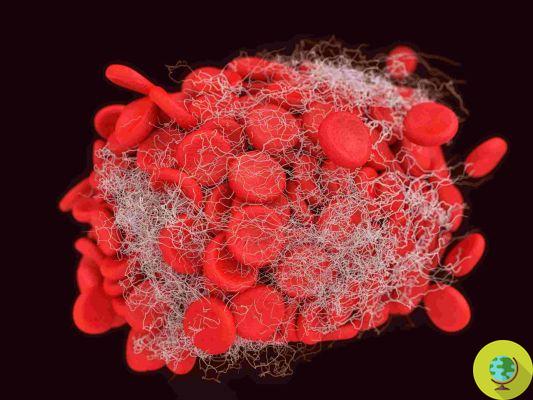 Don't store avocado like this: it's dangerous
Don't store avocado like this: it's dangerous
If the platelet values are too high or too low there may be some signs that indicate clotting disorders
Platelets are fragments of cytoplasm that are essential for blood clotting and it is very important that the range of these substances is between normal values. Otherwise it is good to go immediately to investigate the causes, also assessing early the presence of some signals that could indicate disorders in coagulation.
Platelets are particles of blood produced in the bone marrow. These play an important role in the process of blood clot formation, in practice their main function is to stop bleeding by coagulation when any wound occurs.
This, however, provided that i platelet values within the blood are normal. In fact, due to a series of more or less serious or temporary health conditions, it can happen that the values are high and this exposes us to some risks.
But let's start by understanding what is the range of values considered normal for platelets in the blood.
Platelets: normal values
In a healthy person, the ideal platelet count in the blood test is between 150.000 and 400.000 per cubic mm (microliter).
If the number of platelets is lower than 150 thousand it is referred to as thrombocytopenia or thrombocytopenia while the high platelet count is known as thrombocytosis.
On thrombocytopenia, read also: Low platelets: symptoms, causes and how to intervene
As for thrombocytosis we must distinguish between:
- reactive thrombocytosis: caused by an underlying medical problem, such as an infection
- essential thrombocytosis: the cause of which is not clear but which often appears to be linked to genetic mutations
If the values differ only slightly from the range considered in the norm, they will be interpreted by the doctor as appropriate. Generally these are not serious situations but only to be monitored over time to see if they fall.
If the platelet values are very different from the reference values, it is good to investigate.
With markedly increased platelets there is generally an increased risk of blood clots, especially if the abnormal platelet count is chronic and there are other pre-existing health conditions. If, on the other hand, the number of platelets is significantly lower, there is an increased risk of serious bleeding.
Signs of blood clotting disorders
In the case of very low platelets, and therefore if there is a reduced coagulation capacity, the following signs may occur to be evaluated and included in a clinical picture with the help of a doctor:
- bruises and subcutaneous hematomas even in case of light trauma
- bleeding from the gums or nose
- blood in the urine
- hemorrhages
- menorrhagia (too heavy and abnormal menstrual bleeding)
- blood in the urine or stool
- fatigue
If there is the opposite problem, that is a platelet count that is too high (thrombocytosis), it should be emphasized that often people do not experience particular signs or symptoms.
If they appear, then, they can easily be confused with those of other conditions. It is in fact:
- headache
- dizziness or lightheadedness
- chest pain
- weakness
- numbness or tingling in the hands and feet
If, on the other hand, dangerous blood clots have formed, in this case it is a thrombosis. The presence of blood clots can cause swelling in the legs or arms, in less severe cases, but they are extremely dangerous if they reach the lungs, for example.
In this case, the symptoms to pay particular attention to are:
- shortness of breath and chest pain (in case the clot has reached the lungs)
- pain, swelling and redness of the legs
In the following article you will find several possible early signs of thrombosis depending on where the blood clot presumably formed.
Read also: What are the first signs of thrombosis? How to tell if you have a blood clot
But returning to thrombocytosis, since it is unlikely to cause symptoms, you will only realize you have this condition during a routine blood test that will reveal a higher than normal number of platelets. If so, the doctor will try to determine why.
Fonti: Mayo Clinic
Read also:
- Symptoms of thrombosis to watch out for in the Danish agency's letter to the vaccinated
- Pfas: alter blood clotting and increase cardiovascular risk
- Symptoms of poor circulation: the first signs to watch out for (and that we sometimes ignore)
- Thrombosis: symptoms, causes, how to recognize and treat it in time
- Symptoms of thrombosis to watch out for in the Danish agency's letter to the vaccinated


























